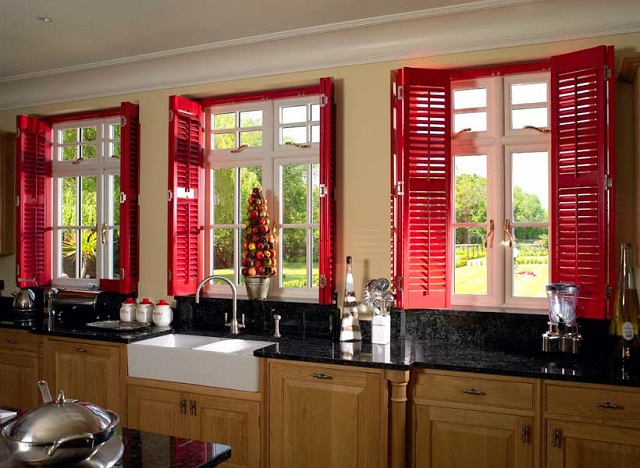It looks like the good old window shutters have made a comeback and are here to stay in their full glory. This should come as no surprise though – wooden window shutters are versatile, affordable and practical, while also conveying a classic elegance and increasing the value of a home. This amazing window solution can be the missing piece in the aesthetics of any décor scheme (from cottage style and bohemian to traditional and modern).
But still, not all wooden window shutters for sale are a one-size-fits-all accessory. You’ll need to put a lot of factors into consideration to choose something that not only looks great on your windows, but brings functionality to your living space as well. Here are the 3 steps to consider.
Mull over Materials
The term wooden is incredibly broad and can contain dozens of types of timber. However, not all wood works the same for window shutters. For instance, there’s the hard timber choices such as oak, maple and poplar. Most people tend to associate these materials with high-quality, but in reality, they are very heavy and cause too much pressure on window jambs and screws which can result in a lot of damage over time.
On the other hand, there’s fast growing timber often used in the production of premium shutters, painted or stained. They have incredible insulating properties and last a lot longer than cheaper wood composites. From these fast grown trees, basswood is by far the most popular choice for wooden window shutters. Even after being processed, it still retains its unparalleled natural beauty, rich colour and sheen. But perhaps its greatest advantage is that it’s one of the more lightweight wood materials for shutters while also having a strong construction. Window shutters made out of basswood are known for their incredible longevity and weather resistance.
Inside or Outside Mount
Custom made wooden window shutters have experienced a surge in popularity in recent years as more and more people discover their many advantages. Having your shutters custom made enables you to have control over their final look and to decide on the mounting location. Whether you decide to get an inside or an outside mount depends on several factors, such as the architectural style of your home, the desired look you’re hoping to get and the practical side of each option.
The strongest argument for interior shutters is that they are enclosed and completely protected from the elements. This makes them easier to maintain and prolongs their lifespan. Moreover, being on the inside means that you can incorporate them as an interesting décor piece in your interior design.
Exterior shutters are found in houses that lean towards the traditional and rustic style. They completely cover the windows from the outside and offer great protection against vandalism. Being on the outside means that they will be exposed to the elements. But on the bright side, they make an impressive design statement which brings sophistication and warmth to any home’s exterior.
Tilting Options
When you think of traditional window shutters, the usual image that comes to mind is that of a front-facing tilt bar. The bar is located on the front of each set of louvres and you can manipulate it upward or downward to let the sun in or block it out.
However, the classic look is no longer your only option. If you’re not sure whether this traditional shutter look fits your style, there are other alternatives as well. One option is to install hidden bars behind the louvres, completely out of sight. This is a convenient solution if you love to be able to look through the open louvres without any bars obstructing your wonderful front view.
Then, there are split tilt systems which combine the best of the previous two styles. These are especially great for shutters covering large windows. Both louvre sections are separated horizontally into two shutter panels which you can control separately via the split-tilt system. This way you can close off the bottom half for privacy, while the sun enters though the upper half which is left open.

